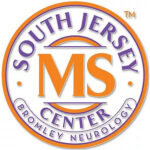
There are two main types of stroke: ischemic and hemorrhagic. Hemorrhagic strokes are caused by a rupturing blood vessel in the brain. They usually occur when blood pressure is too high or a vascular malformation causes a blood vessel to burst. Hemorrhagic strokes affect part of the brain while ischemic strokes only affect the entire brain.
Named the most dangerous types of stroke
Thrombotic strokes are caused by blood clots that form inside the arteries in the brain. Most people develop thrombotic strokes as they get older. High cholesterol levels, atherosclerosis, and diabetes are associated with thrombotic strokes. A thrombotic stroke may begin suddenly, during sleep, or slowly over a period of hours or days. Because symptoms do not always appear immediately, it is important to seek medical care as soon as possible.
Hemorrhagic strokes are more common and involve high blood pressure. Subarachnoid hemorrhages are less common. Transient ischemic attacks are similar to ischemic stroke symptoms, and they are often a warning sign of a future stroke. Some people may experience one of these, but this type of stroke is usually not life-threatening. Despite the similar symptoms, ischemic strokes require immediate medical attention.
Although there are similarities in symptoms, the different stroke types can have very different symptoms. Some are caused by blocked blood flow to the brain. Some are caused by blood clots or fatty deposits blocking the arteries. These clots can be embolic or thrombotic. These blood clots are often formed in areas with narrowed arteries. This can occur naturally in older people; however, irregular heartbeats can speed this process.
If blood flow to the brain is interrupted, brain cells begin to die. If this happens, the symptoms of a stroke can include sudden, severe pain and even death. Immediate medical treatment is critical and will increase your chance of recovery. Ischemic strokes are more common than haemorrhagic. Getting treatment immediately after a stroke is critical to recovering and getting back on your feet. It’s important to remember that both types of stroke have different effects on the brain.
Another type of stroke is called a mini-stroke, or TIA. This type of stroke is a temporary blockage in blood flow to the brain. These symptoms can happen anywhere from a few minutes to several hours before a full-blown stroke. TIAs can be warning signs of ischemic stroke and should be treated as quickly as possible. A TIA can cause brain bleeding and damage to nearby brain cells.
Hemorrhagic strokes can be caused by a wide variety of different conditions, but the most common is ischemic. This occurs when a blood clot blocks the flow of blood to the brain. A blood clot may develop because of atherosclerosis in the arteries. The clot travels into the brain, causing the stroke. A doctor’s treatment for an ischemic stroke will focus on removing the clot and preventing further damage. In some cases, an anticoagulant called alteplase is administered to increase blood flow to the brain.
Another type of stroke is a cryptogenic stroke, which cannot be determined. This type of stroke affects the brain stem and can cause a patient to be in a “locked-in” state. Hemorrhagic strokes are the deadliest type of stroke. Although the cause of a stroke cannot be determined, treatment for the stroke can improve the chances of a successful recovery. You can find out more about stroke treatments and prevention strategies by visiting a hospital.
Causes and symptoms of hemorrhagic stroke
Treatment for these two different types of strokes depends on the cause of your stroke. If your clot is a cerebral embolism, a weakened blood vessel will rupture. This builds up blood that will cause pressure on the brain tissue. There are several types of stroke, so knowing what type of stroke you are experiencing will help you get the best treatment possible. This article will explain the causes and symptoms of these types of strokes and help you make the best decision.
It is important to remember that most TIAs are not considered a medical emergency. However, if you feel a stroke-like symptom, you should contact your doctor as soon as possible. It is important to get treatment as soon as possible, because a stroke can be life-threatening if left untreated. A stroke-like symptom could be caused by another condition, such as high blood pressure or diabetes. Your doctor will perform a thorough evaluation to determine the cause of the symptoms and get you the best treatment.
Hemorrhagic strokes occur when a blood vessel breaks near the brain. Sometimes, aneurysms or abnormal clusters of blood vessels are the culprits. In this case, treatment for the stroke involves surgery. Sometimes, devices called “coils” are inserted to prevent the blood vessel from rupturing. In the case of aneurysms, the UI Health team was the first in the state to coil the vessels using a nonsurgical method. Another technique, known as nidus embolization, cuts off the blood supply to the AVM.
